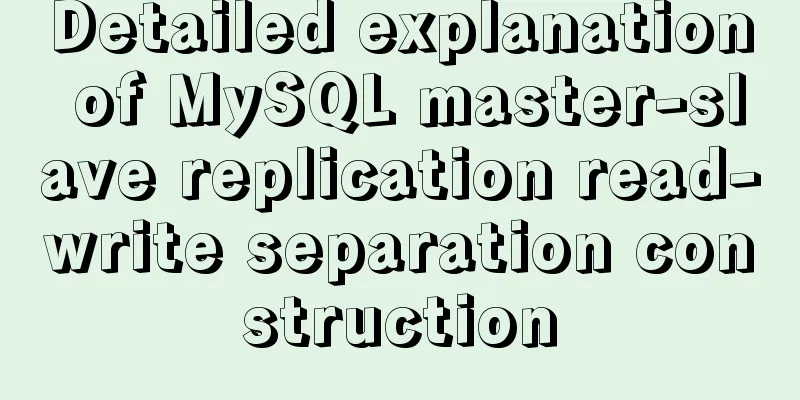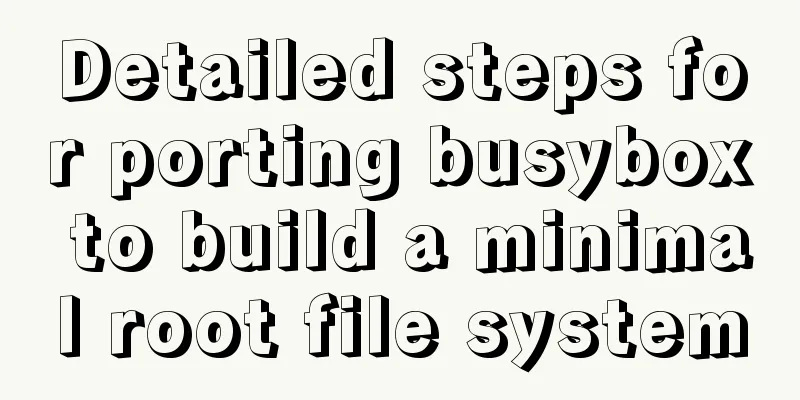How to make a centos base image

|
Preface Now the operating system used by my company is all centos7.4, and of course the application is also deployed on centos. If docker is used for deployment, it is natural to build your own application image based on the centos image; but you can also build a basic framework image between the centos basic image and the application image, such as: basic JDK image, image based on Python environment, etc.; I believe everyone has also encountered that after building an image, the Chinese printed out when deploying the application is garbled, the log time shows UTC time, which is 8 hours less than Beijing time, and when you want to see whether a certain process is up, you find that the telnet command, ps command, and netstat command are not available, and when you want to edit a file, you find that the vim command is also unavailable; today we will take a look at how to build an enhanced centos image based on the centos image; Building a mirror repository Before building your own image, you need a place to store your image so that you can use it directly later. There are two ways of thinking: The first is to build it on your own machine, and then upload it to your own cloud disk through the command Having said so much, let's take a look at how to build your own image warehouse; (In this article, we only use Alibaba Cloud's warehouse and build our own namespace). Of course, you can also apply for a cloud host yourself, and then build a private server. First log in to Alibaba Cloud, and then find the location of the container image service from the service, as shown in the following figure:
Click Container Mirror Service to enter the Mirror Warehouse creation interface as shown below
Click Create to enter the warehouse creation interface
After filling in the information, click Next to choose how to upload the image
Because my requirement is to build from a local warehouse, but I think local warehouse building is the most flexible way; After creating the image storage location, you can create a Dockerfile locally to build your own image; Build centos enhanced version image 1. First, create a Dockerfile file and put the following content into the file FROM centos MAINTAINER terry.king "[email protected]" # Define the time zone parameter ENV TZ=Asia/Shanghai RUN ls -snf /usr/share/zoneinfo/$TZ /etc/localtime && echo '$TZ' > /etc/timezone # Set the encoding RUN localedef -c -f UTF-8 -i zh_CN zh_CN.utf8 ENV LC_ALL "zh_CN.UTF-8" # Install basic yum packages RUN yum install -y gcc gcc-c++ pcre pcre-devel zlib zlib-devel openssl openssl-devel patch net-tools iproute telnet bind-utils wget kde-l10n-Chinese glibc-common 2. Log in to Alibaba Cloud Docker Registry sudo docker login --username=your Alibaba Cloud account registry.cn-shenzhen.aliyuncs.com The username used to log in is the full name of the Alibaba Cloud account, and the password is the password set when activating the service. You can change your login password on the product console home page. It is the second button to create a mirror repository, set the registry login password to the left 3. Build the image and push it to the Registry $ docker build -t terrylmay/centos . $ docker tag terrylmay/centos registry.cn-shenzhen.aliyuncs.com/terrylmay/centos:[image version number] $ docker push registry.cn-shenzhen.aliyuncs.com/terrylmay/centos:[image version number] The default image version number is latest Summarize In this way, a series of problems mentioned in the preface can be solved when building an application image. It is convenient for you to quickly build your own application image; You may also be interested in:
|
<<: Develop calculator example code using native javascript
>>: Summary of MySQL5 green version installation under Windows (recommended)
Recommend
How to solve the timeout during pip operation in Linux
How to solve the timeout problem when pip is used...
Detailed explanation of the principle of creating tomcat in Eclipse
When creating a tomcat server on a local eclipse,...
Example code for implementing anti-shake in Vue
Anti-shake: Prevent repeated clicks from triggeri...
Using docker command does not require sudo
Because the docker daemon needs to bind to the ho...
Example of Html shielding right-click menu and left-click typing function
Disable right-click menu <body oncontextmenu=s...
CSS solves the misalignment problem of inline-block
No more nonsense, post code HTML part <div cla...
mysql add, delete, modify and query basic statements
grammar Here is the generic SQL syntax for INSERT...
Embed player in web page embed element autostart false invalid
Recently, I encountered the need to embed a player...
Vue front-end development auxiliary function state management detailed example
Table of contents mapState mapGetters mapMutation...
How to solve the problem that VMware virtual machine bridge mode cannot access the Internet
Step 1: Check the local Ethernet properties to se...
Summary of basic operations for MySQL beginners
Library Operations Query 1.SHOW DATABASE; ----Que...
Method for implementing performance testing of MySQL database through sysbench tool
1. Background Sysbench is a stress testing tool t...
Detailed explanation of Js class construction and inheritance cases
The definition and inheritance of classes in JS a...
Detailed explanation of MLSQL compile-time permission control example
Preface The simple understanding of MySQL permiss...
Interpreting MySQL client and server protocols
Table of contents MySQL Client/Server Protocol If...













